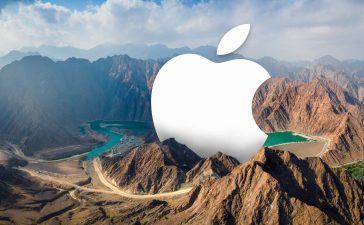Apple is apparently working with its own form of generative AI but analyst Ming-Chi Kuo tells us not to expect an Apple GPT service before 2024, or later.
The analyst says part of the reason Apple isn’t yet introducing these services is that executives haven’t figured out a “clear strategy” for deployment of the tech.
Why isn’t it clear?
The thing is the go-to market strategy for this (and for any other technology) has always been inherently understood at Apple: It is to augment human capability while respecting innate humanity. This has always been Apple’s approach.
Apple knows this, and already follows that path. It’s put limited implementations of AI inside its products for years, including features such as fall and crash detection, the electrocardiogram (ECG) functionality on the Apple Watch, translation, image recognition, and most recently, voice message transcription.
“These things are not only great features, but they’re also saving people’s lives out there,” Apple CEO Tim Cook said earlier this year. “We view AI as huge, and we’ll continue weaving it in our products on a very thoughtful basis.”
Stay focused, stay foolish
Apple’s approach really should reflect its traditional focus on giving users what they need. It makes sense to deploy an Apple LLM in specific ways for use in specific apps.
Here are some ideas to show how the company could improve its products through focused deployment of generative AI.
- Just as Adobe has done in Photoshop, in Photos, Apple could deliver on-device, prompt-based edits and enhancements of images, removal of backgrounds and other basic features. The ability to use Siri to initiate these commands would benefit iPhone-using photographers putting quick edits and compositions together on the fly for subsequent finalization in pro imaging apps.
- In Health, the tech could combine physical measurements with location, scheduling, and other information to provide users not just with a summary of historical health habits, but also to identify patterns of ill health and/or recovery. This information might even help people falling sick identify when and where they were when they became infected, which could make a big difference to public health.
- Mail is the essential application everyone kind of hates. Apple has improved it over the last couple of years and new features such as the capacity to delay message sending or remind you of incoming emails make it more useful. But its search facilities are quite limited. An Apple large language model (LLM) could help deliver richer associations between the information you already own, identifying more complex interactions, such as, “Gather all the email that relates to the presentation scheduled for Sept. 19,” for example.
- Shortcuts are great, but I still think most users remain confused by some of the language used in the instruction templates. However, each available step in Shortcuts is predictable and searchable. With that in mind, it should be possible to ask Apple GPT to deliver a Shortcut for a required objective. (Maybe it could be called “Siri Pro.”)
- We all recognize Generative AI can create emails, texts, and other output based on user prompts, and while that’s not always desirable, it makes sense to use the technology to support Apple’s other machine learning features, such as Voice Control, Siri, Search, and Dictation.
- It makes sense to put more of this kind of intelligence inside apps. Think how useful would it be if all you had to do was throw a spreadsheet of data into Numbers to generate various visual representations of that information based on a more advanced contextual understanding of it? What about a NoCode XCode chatbot to help automate common tasks?
Be selective, focus on the user
While I don’t suppose any of these suggestions really leverage the true potential of LLM-based machine intelligence in Apple’s ecosystem, it seems to me that improving selected apps and services is a viable strategy for deployment.
It’s an approach that manages to reflect Apple’s core mission of putting its users at the center of what it does by making it easier for them to achieve what they intend to do.
Please follow me on Mastodon, or join me in the AppleHolic’s bar & grill and Apple Discussions groups on MeWe.
Copyright © 2023 IDG Communications, Inc.












